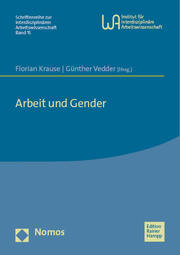American Studies in Dialogue
Radical Reconstructions between Curriculum and Cultural Critique, Nordamerikastudien 29
Erschienen am
04.10.2010
Bibliographische Informationen
ISBN/EAN: 9783593393179
Sprache: Englisch
Seiten: 297 S.
Auflage: 1. Auflage 2010
Einband: Paperback
Autorenportrait
Matthias Oppermann ist wissenschaftlicher Mitarbeiter am Lehrstuhl North American Literary and Cultural Studies der Universität Bielefeld.
Leseprobe
2.3 Radical Teaching Contra Cultural Consensus? As Mechling, Meredith, and Wilson (1973) have suggested, the effects of the rapid growth of American studies during the 1960s are by no means exclusively positive. American studies scholarship of the time seems marked by a sense of both maturation and crisis. As early as 1963, Hennig Cohen assessed that The American Studies movement has become just a little tired, careworn, and taken for granted. Once something of a siren, she is now somewhat fleshed out and matronly, and at moments capable of observing her household and progeny with a degree of self-satisfaction. But if she is no longer slim and starry-eyed, she has a better sense of discipline, balance, and of her own limitations, while retaining her original energy, curiosity, and purposefulness. (Cohen 1963, 550) The mid1960s were generally considered something of a turning point in the academic status and development of the field. In her essay on "The Midlife Crisis of American Studies," Doris Friedensohn remarked that "American Studies had Cinderella status" in the academy until the mid to late 1960s (1972, 372). Gene Wise referred to the period that followed the mid1960s as "the 'coming apart' stage of American Studies" (1979b, 312). What exactly was coming apart? And what led to this heightened sense of crisis? One likely answer to both questions entails a reference to the holistic and consensual notion of the culture concept that still operates in the mid-1960s. Despite its diversity and heterogeneity, a national culture-as it was understood by scholars like Hennig Cohen in the early 1960s (see above)-was based primarily on cultural consensus. In his article "Cultural History and American Studies: Past, Present, and Future" (1971), Robert Sklar described the 1960s as a time of increasing disillusionment with this idea of American cultural consensus: During the 1960s the premises of an optimistic and largely uncritical American cultural consensus were shattered. Where most Americans had once perceived a society of affluence and well-being, many now began to see poverty and mal-nutrition. Where most Americans had accepted their nation's military and economic role in the world as benevolent and necessary, many now began to regard it as destructive and imperialistic. Where it had been generally assumed that economic and material growth were the signs of a thriving society, many now sensed that growth meant pollution and ecological crisis. Where it had been expected that assimilation and an end to discrimination were rapidly being achieved, many began to find identity and pride in heightened racial and sexual consciousness, confrontation, and separation. Groups which had seemed only peripherally or covertly or inconsequently a part of American culture-blacks, Chicanos, Puerto Ricans, Indians, women, homosexuals-demanded to be recognized as part of the whole culture of the United States, as well as asserting their rights to create their own histories and determine their own cultural role. (Sklar 1971, 3-4) Sklar's account highlights some of the issues that led to a radical critique of the notion of cultural consensus. Diverse social movements and identity politics came to the fore in various public arenas. These changes had profound effects on research and curricula in American higher education. First, as minorities started to enter universities in larger numbers, many of the questions asked in political arenas were also rightfully asked about curricula in American studies, like "where are the blacks?" and "where are the women?" (Lauter 1999, 31). Second, the political turmoil of the 1960s put considerable strain on existing explanatory frameworks of earlier American studies. Depending on political perspective, the necessary changes to the field are today perceived as "salutary" by some, and unhealthy by others. James E. Hartley (on the more conservative side of the political spectrum) agrees that the 1960s were turning point for American studies: In 2004, in his version of the development of American studies, he remarked that From a program designed to read the great books of American civilization, the American Studies movement has become nothing more than an extension of the politicization of the university itself. This complete transformation occurred in the 1960s. As Robert Sklar, former vice president of the American Studies Association put it, "The vitality, ferment, and conflict of the 1960s have had a salutary effect on American Studies." (31) A salutary effect: America Studies was sick back in the old days and the events of the 1960s brought it to health. No longer would American Studies be mired in the illness of looking for what was common to the American experience. Rather, the discipline of American Studies would now undertake a healthy study of the failings of America, a healthy examination of ethnicity and gender. (Hartley 2004, 51; emphasis in original) As Hartley's rhetoric powerfully illustrates, the debates concerning benefits and drawbacks of the transformation of American studies in the mid- to late 1960s and early 1970s continue to be ideologically charged. Conservative and progressive critics agree, however, that American studies was in a deep crisis during that time. According to the aforementioned former vice president of the ASA Robert Sklar, this really should not surprise anyone, because "as an intellectual discipline American Studies has always been in crisis" (1970, 597). Nonetheless, he continues to note a year later, "[] the present crisis is more serious than all previous crises" (1971, 5). During this "more serious crisis," several factors contributed to a radical critique of the holistic concept of culture that had been associated with earlier versions of American studies. Central to this critique were a perceived methodological chaos, uncertainties with regard to the culture concept as the central paradigm of the field, and, most importantly, the notion that current social and cultural processes could not be adequately described through the categories of "traditional" American studies. Building on Günter Lenz, Alice Kessler-Harris suggests that By the late 1960s and early seventies, the lines that tied the holistic culture together began to fray. Perhaps a major reason, as Günter Lenz has noted, was the profound discontent with what was seen as the hegemonic unity created by mass culture. Groups struggling for racial and gender equality and against the Vietnam War exposed the ways in which a putative cultural unity served political ends. (Kessler-Harris 1995, 61) In the early 1960s Hennig Cohen had claimed that America, complex as it may be, could be seen as one culture and studied as such (1963, 552). By the end of the decade, social movements had actively challenged such a holistic notion of culture. The cultural and political climate of the time exposed the alleged cultural unity of American society as a fiction in a myriad of ways. The assassinations of John F. and Robert Kennedy, of Martin Luther King and Malcom X, student demonstrations for the right to free speech and against the continuing Vietnam War, happenings at Haight/Ashbury, Woodstock, the Stonewall Inn riots, or race riots in Watts, Newark, Miami, and Washington, DC-how was one to explain these events as expressions of common cultural myths? What methodology did American studies have at hand to adequately theorize these cultural earthquakes? In his book American Historical Explanations: A Strategy for Grounded Inquiry (1973), Gene Wise describes this methodological problem from a very personal perspective, in light of the now infamous events surrounding the Chicago Democratic Convention of August 1968. This convention lasted for a week, and during that time demonstrators and police clashed outside the International Amphitheater, the location of the convention were the delegates met. When police forces denied activists a...
Inhalt
Table of Contents Acknowledgmentsix Introduction12 Histories of Curricular Innovation 1. American Studies as Curricular Innovation: Interventions into Narratives of Field Formation35 1.1 "A Subject So Familiar and So Simple": American Literature and American Civilization in the College Curriculum38 1.2 Money, Jingoism, and Folklore? American Studies after World War II55 1.3 Bridging the Schisms of Culture and Method: "Peaux Rouges" and "Mandarins" in Minnesota75 2. Maturity and Midlife Crises: Radical Teachers, Cultural Turns86 2.1 Quantitative Growth and Organizational Structures in the 1960s and 1970s88 2.2 Cultural Experts and Literary Amateurs in the Early 1960s 94 2.3 Radical Teaching Contra Cultural Consensus?100 2.4 Collaborators, Computers, Problem-Solvers: Minnesota, Pennsylvania, and Davis (Re-)Considered107 Trajectories of Transformation 3. Multiculturalism as Radical Critique: American Studies Beyond the Nation131 3.1 Social Movements, European Theory, and the Search for Resistance134 3.2 Contextualizing Cultural Studies: The Political Work of Cultural Critique140 3.3 Dialogics Beyond Borders: American Culture Studies146 3.4 From Coverage to Contact Zones: Curricula of Comparative U.S. Cultures152 4. American Studies in the Age of Digital Cultures165 4.1 American Studies and New Media166 4.2 Culture and Database: George Allen''s Curse, Chris Crocker''s Cupcake171 4.3 New Media-New American Studies?179 Expansions of the Field-Imaginary 5. American Studies and the Learning Paradigm187 5.1 Understanding Student Learning193 5.2 Novice, Expert, and Beyond203 5.3 Does American Studies Have "Signature Pedagogies"?214 6. From Best Practices to Next Practices226 6.1 Going Meta: Towards a Scholarship of Teaching in American Studies227 6.2 Pedagogies and Epistemologies: Notes from the Visible Knowledge Project234 6.3 Digital Storytelling: Adaptive, Embodied, and Socially Situated245 Epilogue266 List of Tables273 Bibliography274 Index292
Schlagzeile
Nordamerikastudien
Weitere Artikel aus der Kategorie "Soziologie/Arbeitssoziologie, Wirtschaftssoziologie, Industriesoziologie"
Noch nicht lieferbar

Noch nicht lieferbar

Noch nicht lieferbar

Noch nicht lieferbar

Noch nicht lieferbar

Lieferbar innerhalb 1 - 2 Wochen








